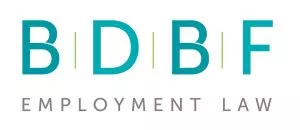Is there light at the end of the lockdown tunnel for employers?
In this article, we look at five key issues for employers to consider as we emerge from a strict lockdown into a changed working world.
On 16 April 2020, the Government announced that the current strict social distancing rules – also known as "lockdown" – would be extended until 7 May 2020. However, with school examinations cancelled and the furlough scheme extended to 30 June 2020, it seems unlikely that there will be an immediate return to normal life in early May. Indeed, the Chief Medical Officer, Professor Chris Whitty, recently said that "highly disruptive social distancing" would need to be in place at least until the end of 2020. What might this new world look like for employers and how should they prepare?
Adjusting work patterns for long-term social distancing
We don't yet know what 'highly disruptive social distancing' will mean for the workplace. It has been reported that the Government are considering asking employers to adopt radical measures such as:
- Staggered start times for workers of 7am, 10am and 1pm.
- Alternating days working at the employer's premises and from home.
- Introducing weekend working.
The intention is that such measures will promote social distancing by easing rush hours and reducing the number of people in the workplace at any one time. Whether or not such measures come to pass remains to be seen. However, it would be wise for employers to begin considering how to respond to the long-term need to reduce the number of workers travelling to and from work each day. Employers should consider which, if any, functions and roles need to return first and for how many hours per week. Another option would be to organise the workforce into separate teams which attend the workplace on alternate weeks. It may also be possible for some roles to continue to be performed entirely from home in the long term.
Employers will need to consult with affected workers and/or their representatives about the feasibility of new working patterns. Workers will be subject to different pressures and/or have different concerns about returning to work, for example:
- Some workers may have ongoing caring responsibilities which may mean it is difficult for them to resume work outside the home (e.g. for children until schools and nurseries reopen and/or for older and vulnerable relatives who are shielding).
- Some workers may have a high level of anxiety about returning to work, particularly in the initial phase after the lockdown is relaxed.
- Pregnant workers and those with certain underlying health conditions may be subject to restrictions on their movements outside the home. If this is the case, employers will have to consider how to treat such workers, in light of any continued Government support which may be available.
Wherever possible, employers should try to reach a suitable compromise. Forcing such workers to return could breach the duty of mutual trust and confidence and may also be discriminatory (e.g. on the grounds of sex or disability).
Managing health and safety in the workplace post-lockdown
Before workers return to the workplace, employers should conduct a health and safety risk assessment and take measures to address any identified risks. Importantly, employers will need to comply with ongoing rules around social distancing, such as maintaining distances between workers of at least 2 metres. This may involve reorganising workstations and placing limits on the number of people that can use common areas, such as meeting rooms and eating areas.
Once workers have returned to work, employers should adopt other appropriate measures to help prevent the spread of coronavirus. This could include the following:
- Circulating the Government's latest guidance to staff, together with any internal policies, and providing a point of contact within the business to discuss any concerns.
- Reminding staff about the recommended hygiene measures such as regular handwashing.
- Providing access to anti-bacterial handwash, hand sanitiser and antibacterial wipes (especially near items which are touched by multiple people, such as photocopiers).
- Closing, or staggering the use of, the staff kitchen area and/or canteen.
- Providing anti-bacterial surface spray or wipes in kitchen and/or eating areas.
- Providing plenty of free tissues and additional bins.
- Engaging additional deep cleaning services.
- Designating a special area for breastfeeding mothers to wash and store breast pump equipment and expressed milk.
- Designating a closed-off area for anyone displaying symptoms of coronavirus whilst at work.
- Discouraging physical forms of greetings such as handshakes and kisses.
- Temporarily banning attendance at non-essential meetings, conferences and social events.
- Placing restrictions on third parties entering the workplace (e.g. clients, contractors, couriers).
- Providing face masks to workers who use public transport to get to and from work.
Some employers may also wish to consider introducing mandatory employee temperature checks and antibody testing. Very careful consideration would need to be given to such measures in light of the data protection implications involved in the gathering health data from workers.
Helping workers manage anxiety and mental wellbeing
Employers already know that managing workers' anxiety about coronavirus is one of their most pressing challenges. A survey of 300+ employers conducted by People Management and the CIPD revealed that with 67% of employers viewed managing coronavirus anxiety as one of their top priorities. The length and severity of the pandemic will have taken its toll on the mental wellbeing of workers, with many feeling anxious about issues such as job security, finances, their own health and that of family members. Some workers may have spent lockdown alone and suffered the stress of social isolation. Others may have suffered coronavirus-related health problems or experienced bereavements.
The Lancet Psychiatry journal recently reported that emerging studies into coronavirus and previous pandemics have shown a profound and potentially long-term impact on mental health. After the SARs outbreak of 2003, there was evidence of higher rates of anxiety, depression, PTSD and suicide. To help tackle this, medical experts recommend real time monitoring of mental health issues across the general population and at-risk groups, such as those with pre-existing mental impairments. Employers can play their part here by ensuring managers are in regular communication with workers, listening to their concerns and making reasonable adjustments where it is appropriate to do so. Employers may also offer access to mental health support services such as counselling or employee assistance programmes.
Responding to increased requests for permanent flexible working
The lockdown has forced employers to embrace certain forms of flexible working such as homeworking, reduced hours and/or flexi hours. What was borne of necessity, may develop into the new normal when the pandemic is over, with many employees seeking to work flexibly on a permanent basis.
Where employers have previously refused requests to work from home and/or work reduced/flexi hours, they may well see the same request put forward again. This time, the employee will be able to point to a tried and tested lockdown working pattern. Where such a pattern has worked successfully in respect of a particular role, it could be harder for the employer to reject the request. Furthermore, employers could see brand new requests from employees who had not considered flexible working before, but who have now experienced the benefits and are confident using remote technology.
It's even possible that the Government may legislate to force employers to allow workers to work from home if they wish to do so. In Germany, there are plans to introduce a new right to work from home where a job is capable of being performed remotely. The German Labour Minister, Hubertus Heil, is championing the legislation which would allow workers to work from home for some, or all, of their working week, even after the pandemic is over. The proposal was formulated in response to the successful homeworking arrangements put in place during the German lockdown. The German Vice Chancellor, Olaf Scholz, noted that the lockdown had "...shown how much is possible when working from home – this is a real achievement that we should not forget about".
Reducing staff costs when the furlough scheme ends
There are differing reports on how many businesses have applied for grants under the Government's furlough scheme. The Office of National Statistics has reported that around 30% of businesses have applied for funding under the scheme. The British Chamber of Commerce Coronavirus Business Impact Tracker revealed that 71% of employers surveyed had furloughed at least some of their workforce. Either way, a significant number of employers will have had help with their wage costs for the duration of the scheme. When that comes to an end, employers will need to consider whether they are able to return to their pre-furlough position, or whether they need to reduce staff costs in the longer term.
Various options are available to help achieve this including:
- Keeping workers laid off without pay if there is a contractual right to lay off.
- Agreeing with workers that they will remain laid off on reduced pay if there is no contractual right to lay off (funded by the employer).
- Agreeing reduced working hours and pro-rating pay accordingly.
- Agreeing reductions in pay and benefits and/or pay freezes.
- Allowing fixed-term contracts to expire.
- Terminating arrangements with contractors, agency workers and/or casual workers.
- Putting in place a recruitment freeze.
Ultimately, some employers may find that they need to consider downsizing their workforce. Indeed, the People Management/CIPD survey found that 25% of employers expected to make redundancies, with 15% expecting to make up to 10% of their existing workforce redundant. Where redundancies are in prospect, employers need to remember to follow a fair process, including collective consultation where 20+ employees are to be made redundant within a 90-day period.
Conclusion
Understandably, employers are keen for the lockdown restrictions to be lifted to allow their businesses to survive and thrive. Whilst we don't know when the lockdown will be relaxed, what's clear is that "business as normal" is some way off. Employers should now turn their minds towards preparing for the new world that awaits as we emerge from the lockdown tunnel.
The content of this article is intended to provide a general guide to the subject matter. Specialist advice should be sought about your specific circumstances.

